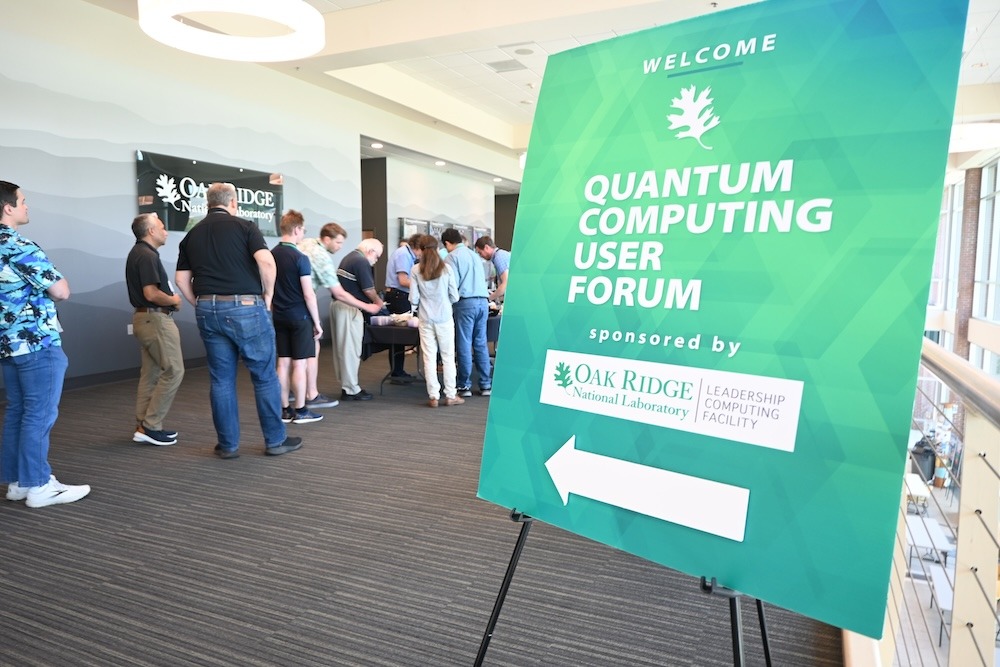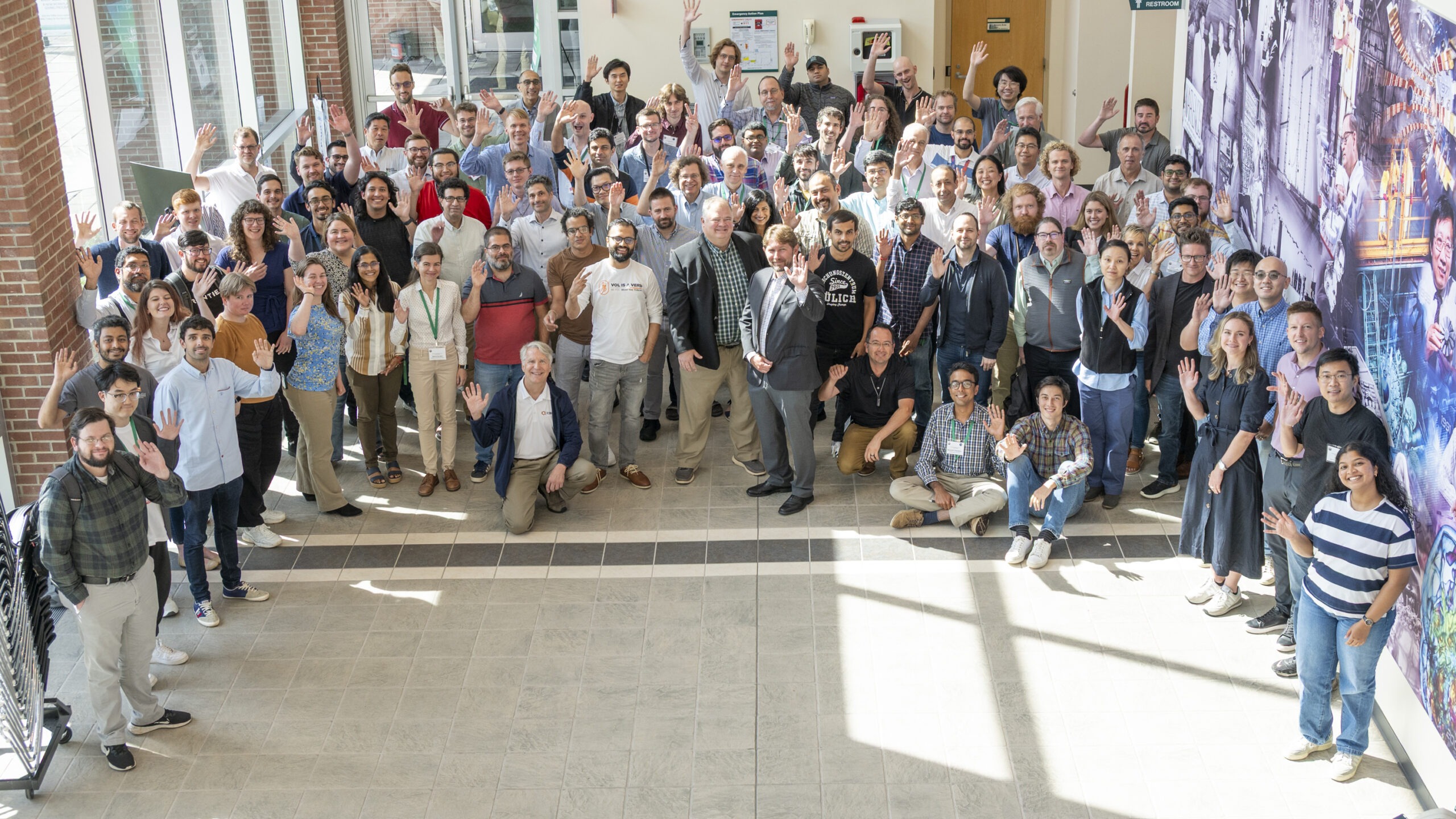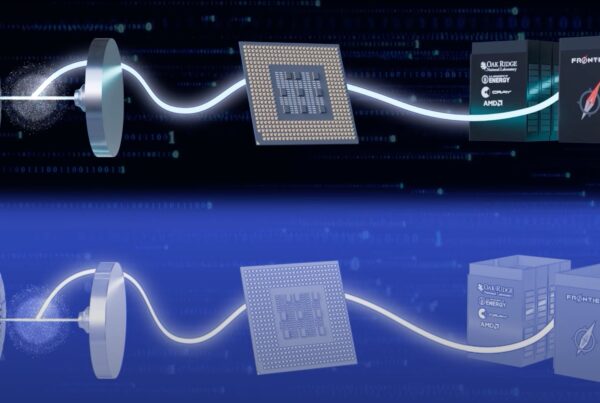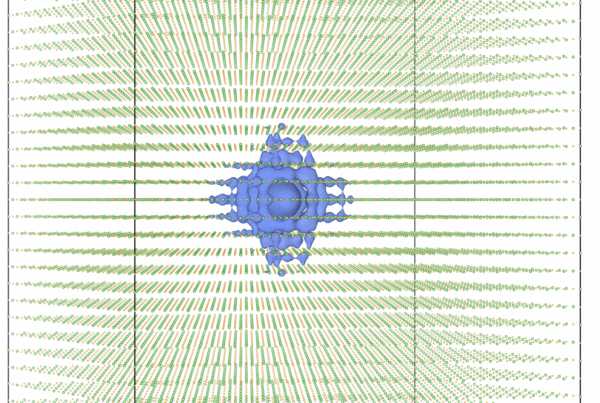The Quantum Computing User Forum welcomed attendees for an interactive event at the Department of Energy’s Oak Ridge National Laboratory from July 21 to July 24.

The sixth annual Quantum Computing User Forum hosted over 140 registered attendees and featured research presentations, panel discussions, interactive workshops and an in-depth poster session. Credit: Kurt Weiss/ORNL, U.S. Dept. of Energy
Hosted by the lab’s Oak Ridge Leadership Computing Facility, or OLCF, the sixth annual event was the largest yet, with over 140 registered attendees. Users spent the week discussing common practices in the development of applications, software and simulations for quantum computing devices and systems.
The forum featured results from an array of projects supported by the OLCF’s Quantum Computing User Program, or QCUP, which facilitates access to state-of-the-art quantum computing systems for more than 500 users worldwide.
“We heard from vendors about the latest technologies, and it was important for our Quantum Computing User Forum (QCUF) participants to gain visibility into these advancements,” said ORNL’s Ashley Barker, QCUP director and OLCF program director. “But it wasn’t just about knowledge sharing; it was about building a community. By fostering connections among users, facilities and organizations investing in quantum technology, we can avoid reinventing the wheel and collaboratively leverage our resources. In the end, our goal was to ensure that everyone left with valuable insights and connections, ready to navigate the fast-paced journey that is the world of quantum science.”
Over the course of four days, attendees participated in panel discussions and hands-on workshops hosted by industry representatives from IonQ, Quantinuum, IBM and IQM. The event provided vendor-hosted workshops every morning and user talks throughout the afternoon.
QCUP began in 2017 and is funded by DOE’s Office of Science Advanced Scientific Computing Research program. Since then, QCUP continues to grow worldwide. As a user program, it enables participants to work closely with ORNL connections from a variety of scientific domains so they can be connected with quantum resources to support their research.

A poster session during the evening on July 22 featured 24 poster displays on various quantum computing topics. Credit: Kurt Weiss/ORNL, U.S. Dept. of Energy
This year’s forum highlighted recent research through workshops and keynote talks on the latest in quantum hardware, methods for mapping problems onto quantum computers and results from scaling up scientific applications of quantum computing. The forum also featured workshops on topics such as the Helios generation of trapped-ion quantum computers by Quantinuum and the integration of quantum computing with high-performance computing, which is a strong focus for QCUP.

A poster session during the evening on July 22 featured 24 poster displays on various quantum computing topics. Credit: Kurt Weiss/ORNL, U.S. Dept. of Energy
This year’s event was planned by Claire Marvinney, ORNL research scientist, along with Josh Cunningham, ORNL IT project manager.
“Awareness of where success is happening is incredibly important, and so is this emphasis on quantum high performance computing integration,” said ORNL’s Travis Humble, director of the Quantum Science Center and special advisor to QCUP. “There is a need to think about larger problems that we can solve. The quantum computing hardware is getting larger, so that means our applications can be larger as well.”
Day two of the event included a poster session during which 24 posters were on display highlighting a variety of quantum computing projects. Users voted for their favorite posters, and the researchers behind the top selections were awarded certificates on the final day of the forum.
Three winning posters earned the most votes during the poster session:
- “Learning Feasible Quantum States for Quadratic Constrained Binary Optimization Problems,” submitted by Anthony Wilkie, University of Tennessee, Knoxville
- “The Quantum-Accelerated Inter Testbed,” submitted by Ashlyn Burch, ORNL
- “Utilizing Quantum Computing for Solving Multidimensional Partial Differential Equations,” submitted by Esam El-Araby, University of Kansas
At the conclusion of the forum, participants praised the forum’s organization and the opportunity to explore emerging technologies — insights that not only inspire innovation but also strengthen the nation’s competitive edge.

The 2025 QCUF poster session winners were (from left) Anthony Wilkie, Ashlyn Burch, and Esam El-Araby. Credit: Angela Gosnell/ORNL, U.S. Dept. of Energy
“A large user forum serves as a powerful platform for collaboration, sparking new ideas and fostering creativity among users,” said David Nicholaeff, an attendee from New Mexico. “One of my biggest challenges with our project has been figuring out how to truly democratize user workflows. This week has been inspiring. Bringing together vendors, users and national AI researchers has shown just how productive this collaboration can be. Once you reach critical mass in these efforts, the momentum really begins to take off.”
QCUF attendees also enjoyed the lineup of speakers, depth of vendor presentations and the layout of sessions.
“The people I was able to connect to and the contacts I made are invaluable,” one attendee said. “Also getting to meet the QCUP organizers who connect us to the different vendors, and talk to them in person, is immensely useful for planning in terms of our projects.”
More information about QCUP is provided on its user-documentation page. Applications are accepted throughout the year.The OLCF is a DOE Office of Science user facility located at ORNL.
UT-Battelle LLC manages ORNL for DOE’s Office of Science, the single largest supporter of basic research in the physical sciences in the United States. The Office of Science is working to address some of the most pressing challenges of our time. For more information, please visit https://energy.gov/science.






